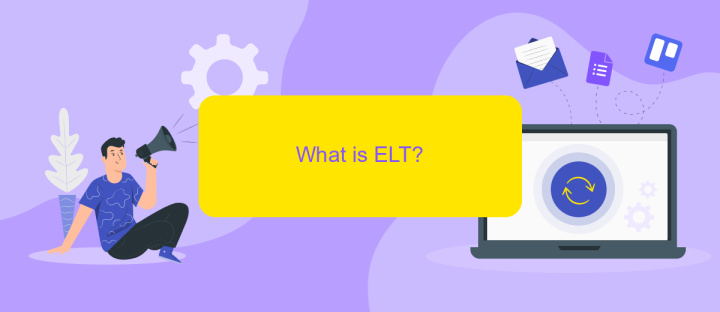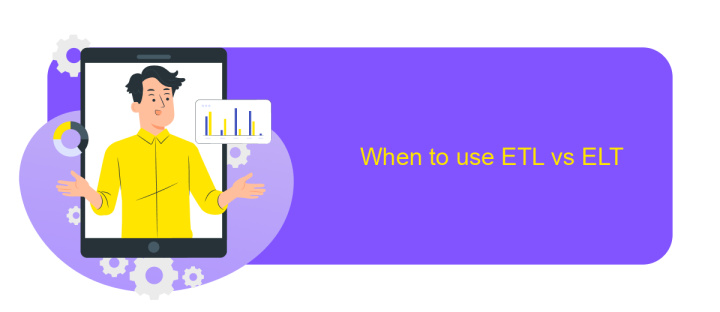When Might You Use an ELT Process vs an ETL Process for Ingesting Data
In the realm of data management, understanding when to use an ELT (Extract, Load, Transform) process versus an ETL (Extract, Transform, Load) process is crucial for optimizing data ingestion workflows. Each method has its unique advantages and is suited to different scenarios. This article explores the key differences and provides guidance on selecting the appropriate approach for your data needs.
Introduction
In the realm of data management, choosing the right process for ingesting data is crucial for optimizing performance and ensuring data integrity. Two primary methods are commonly employed: Extract, Load, Transform (ELT) and Extract, Transform, Load (ETL). Each approach has its own set of advantages and is suited to different scenarios, making it essential to understand when to use one over the other.
- ETL: Data is transformed before loading it into the target system.
- ELT: Data is loaded into the target system first and then transformed.
- ApiX-Drive: A service that can streamline integration processes, making it easier to implement both ETL and ELT workflows.
Understanding the nuances between ETL and ELT can significantly impact your data strategy. While ETL is often preferred for on-premises data warehouses, ELT is increasingly popular for cloud-based systems. Services like ApiX-Drive can facilitate these processes, providing seamless integration and automation to enhance data workflows. By leveraging the strengths of each method, organizations can ensure efficient data management tailored to their specific needs.
What is ETL?

ETL stands for Extract, Transform, Load, and it is a process used in data warehousing and integration to move data from multiple sources into a centralized data repository. The first step, Extract, involves retrieving raw data from various sources such as databases, APIs, and flat files. This data is then transformed into a suitable format through cleaning, filtering, and aggregating, ensuring that it meets the desired quality and structure for analysis.
The final step, Load, involves loading the transformed data into a target database or data warehouse where it can be accessed for reporting and analysis. ETL processes are crucial for organizations looking to integrate disparate data sources and make data-driven decisions. Tools like ApiX-Drive can simplify the setup of these integrations by automating the extraction and transformation stages, allowing businesses to focus on analyzing the data rather than managing the technical complexities of data integration.
What is ELT?

ELT, or Extract, Load, Transform, is a data integration process that involves extracting data from various sources, loading it into a centralized data repository, and then transforming it as needed. This approach is often used when dealing with large volumes of data that need to be processed quickly and efficiently.
Key steps in the ELT process include:
- Extract: Data is extracted from multiple sources such as databases, APIs, and flat files.
- Load: The extracted data is then loaded into a centralized data warehouse or data lake.
- Transform: Data transformations are performed within the data warehouse, utilizing its processing power to clean, aggregate, and enrich the data.
One of the advantages of using ELT is the ability to leverage the computational power of modern data warehouses, allowing for more complex transformations. Tools like ApiX-Drive can be instrumental in setting up integrations and automating the data extraction and loading processes, making it easier to manage and streamline your data workflows.
When to use ETL vs ELT

Choosing between ETL (Extract, Transform, Load) and ELT (Extract, Load, Transform) processes depends on your specific data requirements and infrastructure. ETL is often preferred when you need to clean and transform data before loading it into the target system, ensuring data quality and consistency upfront.
On the other hand, ELT is more suitable when dealing with large volumes of raw data that need to be quickly ingested and stored in a data warehouse or lake for later transformation. This approach leverages the power of modern data storage and processing platforms to handle complex transformations.
- Use ETL when data quality and pre-processing are critical before storage.
- Choose ELT for handling large datasets that require extensive post-load transformations.
- ETL is ideal for systems with limited processing power or when compliance requires pre-load transformations.
- ELT benefits from scalable cloud-based storage and processing solutions.
For businesses looking to streamline their data integration processes, tools like ApiX-Drive can be invaluable. ApiX-Drive offers seamless integration capabilities, allowing you to automate data workflows and choose the best approach—ETL or ELT—based on your specific needs.
- Automate the work of an online store or landing
- Empower through integration
- Don't spend money on programmers and integrators
- Save time by automating routine tasks
Conclusion
In conclusion, the choice between using an ELT (Extract, Load, Transform) process and an ETL (Extract, Transform, Load) process largely depends on the specific needs and infrastructure of your data ecosystem. ELT is generally more suitable for environments with robust data warehousing capabilities and the need for real-time data processing. On the other hand, ETL is often preferred for scenarios requiring data cleansing and transformation before loading into the target system, ensuring data quality and integrity.
For businesses looking to streamline their data integration processes, leveraging tools like ApiX-Drive can be highly beneficial. ApiX-Drive offers a user-friendly platform to automate data workflows, supporting both ELT and ETL methodologies. With its extensive integration capabilities, ApiX-Drive enables seamless data ingestion from various sources, allowing organizations to focus on deriving actionable insights rather than managing complex data pipelines.
FAQ
When should you use an ELT process instead of an ETL process?
What are the main advantages of using ETL over ELT?
Can you use a service like ApiX-Drive for both ETL and ELT processes?
Which process is better for real-time data processing: ETL or ELT?
What are some common challenges when switching from ETL to ELT?
Routine tasks take a lot of time from employees? Do they burn out, do not have enough working day for the main duties and important things? Do you understand that the only way out of this situation in modern realities is automation? Try Apix-Drive for free and make sure that the online connector in 5 minutes of setting up integration will remove a significant part of the routine from your life and free up time for you and your employees.


